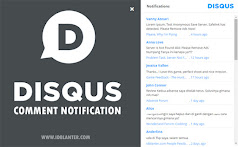Posted by Larry Brilliant, Executive Director,Google.orgIt has been almost exactly one year since I began my work at
Google.org. We've been in a bit of a quiet period during that time, meeting with foundation leaders, activists, NGOs, and scientists -- and Googlers -- from all over the world. My major task has been to build a world-class team, comprised of experienced Google managers paired with content experts from the fields of climate change, global public health and economic development to spearhead strategic initiatives for our philanthropic efforts.
There were four of us one year ago; today we are 25 people, and it gives me great pleasure to introduce a few of the newer members of our team. Dan Reicher, former Assistant Secretary of Energy for Energy Efficiency and Renewable Energy, joins Aimee Christensen, Kirsten Olsen and Googler Ki Mun to work on our clean energy and climate change initiatives, policy and advocacy.
Mark Smolinski and Corrie Conrad join Googlers Katie Wurtz, Matt Waddell and Emily Delmont on our global public health team. Mark is an MD MPH and CDC-trained epidemiologist who worked at the Institute of Medicine and was formerly a Vice President at the Nuclear Threat Initiative, where he worked on a regional disease surveillance system. Corrie joins as a researcher focusing on preventable diseases afflicting the poor, coming from the Clinton Foundation, where she was working on its HIV/AIDS program in Rwanda.
Blaise Judja-Sato, Sonal Shah and Juliette Gimon join Googlers Rachel Payne, Meryl Stone, and Kim Thompson to guide our global economic development efforts. Born in Cameroon, Blaise was most recently President of the Nelson Mandela Foundation USA and the founder of VillageReach, a nonprofit that brings sustainable health care and essential services to more than 3.5 million people in Mozambique. Sonal is the co-founder of Indicorps, a non-profit offering one-year fellowships for people of Indian origin to work on development projects in India, and was previously a Vice President at Goldman, Sachs & Co. developing the firm's corporate citizenship and environmental strategies. Juliette is the chair of the Global Fund for Children and a trustee of the William and Flora Hewlett Foundation. She also serves on the board of the Synergos Institute and the advisory committees of Youth Philanthropy Worldwide and the Global Philanthropy Forum. And I'm particularly pleased that Sheryl Sandberg, VP of Online Sales and Operations and Google.org board member, has agreed to spend a significant amount of her time leading this effort.
Working across our content domains are Linda Segre, Gregory Miller, Jacquelline Fuller, Gillian Peoples, and Chris Busselle along with Googlers Brad Presner, Alan Louie and Tara Canobbio. Linda has responsibility for managing Google.org's project initiatives and operations within Google and is the person to talk to for any operational question about what we call "dotorg". Greg has responsibility for Google.org's investing and grant practices, legal affairs and strategic partnerships as well as the affairs of the Google Foundation. Before moving to California, Jacquelline served as Deputy Director of the Global Health program at the Bill & Melinda Gates Foundation, where she managed Public Affairs and served as speechwriter for U.S. Secretary of Health and Human Services Dr. Louis Sullivan. Jacquelline, who also reports to Elliot Schrage, our VP of Global Communications and Public Affairs, in order to keep our PR efforts coordinated, will lead Google.org's advocacy and communications agenda, including efforts to influence public policy and media.
Also with us on sabbatical is Dr. Larry Simon. He comes to us on leave from Brandeis University's Heller School, where he is Professor and Director of the Sustainable International Development Graduate Programs and Associate Dean for Academic Programs. A specialist on poverty and vulnerability, Larry led Oxfam America's work in Central America and the Caribbean.
We are still looking for a few "good people," and welcome you to visit
our updated list of open positions.
So where are we going now? Google.org is looking to better understand the inextricable linkages among climate change, global public health and economic development, and the impact of global warming on the poor. We want to fund projects that are making a difference and that are effective on a large scale.
We live in very complicated times. Global health, poverty, and climate are inextricably interrelated, and it is the poor of the world who bear the heaviest burden. Google.org is focused on learning initiatives that simultaneously fund good organizations working in these areas and provide insights into "big ideas" that could be scalable from these pilot projects.
During this year we anticipate making more significant grants and investments in support of our major initiatives. We hope to innovate both in what we do, and how we do it. We will report back to you via our site and on this blog regarding on these grants, investments and initiatives. Please look for additional updates as our work progresses.
Update: Awaiting approval from one of our consultants on his participation.












.jpg)

